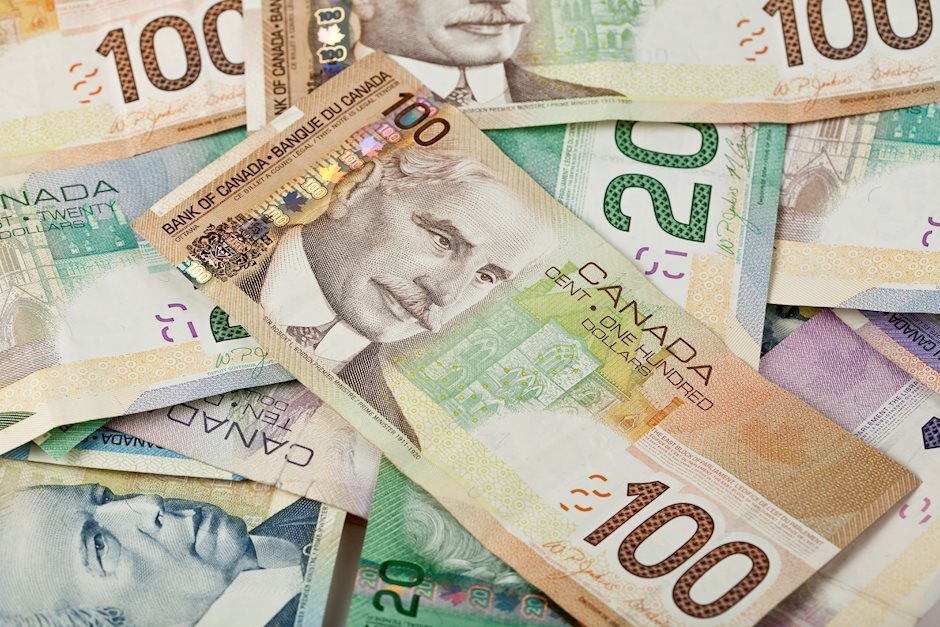USD/CAD falls to near 1.3500 ahead of employment data from both nations
- USD/CAD loses ground due to dovish comments from the Fed officials.
- Fed’s Austan Goolsbee said that the longer-run trend of the labor market and inflation data justify the Fed easing soon.
- The upside of the commodity-linked Canadian Dollar could be restrained due to lower Oil prices.

USD/CAD continues to lose ground for the third successive day, trading around 1.3500 during the Asian session on Friday. Traders are likely to await Friday's release of employment data from the United States (US) and Canada. The US Nonfarm Payrolls (NFP) will be in the spotlight as it may offer further insights on the potential size of an anticipated rate cut by the Federal Reserve (Fed) this month.
The US Dollar (USD) faces challenges following the dovish comments from Federal Reserve (Fed) officials. Chicago Fed President Austan Goolsbee said on Friday that the longer-run trend of the labor market and inflation data justify the Fed easing interest-rate policy soon and then steadily over the next year. FXStreet’s FedTracker, which gauges the tone of Fed officials’ speeches on a dovish-to-hawkish scale from 0 to 10 using a custom AI model, rated Goolsbee’s words as neutral with a score of 3.8.
Additionally, San Francisco Federal Reserve President Mary Daly stated on Wednesday that "the Fed needs to cut the policy rate as inflation is declining and the economy is slowing." Regarding the size of the potential rate cut in September, Daly noted, "We don't know yet." Atlanta Federal Reserve President Raphael Bostic said that the Fed is in a favorable position but added that they must not maintain a restrictive policy stance for too long, per Reuters.
The upside potential of the commodity-linked Canadian Dollar (CAD) could be limited by falling crude Oil prices, especially given Canada's position as the largest Oil exporter to the United States. West Texas Intermediate (WTI) trades around $68.70 at the time of writing, marking a fresh 2024 low amid concerns over demand in both the US and China. However, a delay in OPEC+ Oil output increases and a significant drawdown in crude oil inventories may help cushion WTI’s losses.
In Canada, the Net Change in Employment for August is expected to show an increase of 26.5K new jobs, recovering from the previous decline of 2.8K. However, the Unemployment Rate is projected to rise slightly to 6.5%, compared to the previous reading of 6.4%.
Canadian Dollar FAQs
The key factors driving the Canadian Dollar (CAD) are the level of interest rates set by the Bank of Canada (BoC), the price of Oil, Canada’s largest export, the health of its economy, inflation and the Trade Balance, which is the difference between the value of Canada’s exports versus its imports. Other factors include market sentiment – whether investors are taking on more risky assets (risk-on) or seeking safe-havens (risk-off) – with risk-on being CAD-positive. As its largest trading partner, the health of the US economy is also a key factor influencing the Canadian Dollar.
The Bank of Canada (BoC) has a significant influence on the Canadian Dollar by setting the level of interest rates that banks can lend to one another. This influences the level of interest rates for everyone. The main goal of the BoC is to maintain inflation at 1-3% by adjusting interest rates up or down. Relatively higher interest rates tend to be positive for the CAD. The Bank of Canada can also use quantitative easing and tightening to influence credit conditions, with the former CAD-negative and the latter CAD-positive.
The price of Oil is a key factor impacting the value of the Canadian Dollar. Petroleum is Canada’s biggest export, so Oil price tends to have an immediate impact on the CAD value. Generally, if Oil price rises CAD also goes up, as aggregate demand for the currency increases. The opposite is the case if the price of Oil falls. Higher Oil prices also tend to result in a greater likelihood of a positive Trade Balance, which is also supportive of the CAD.
While inflation had always traditionally been thought of as a negative factor for a currency since it lowers the value of money, the opposite has actually been the case in modern times with the relaxation of cross-border capital controls. Higher inflation tends to lead central banks to put up interest rates which attracts more capital inflows from global investors seeking a lucrative place to keep their money. This increases demand for the local currency, which in Canada’s case is the Canadian Dollar.
Macroeconomic data releases gauge the health of the economy and can have an impact on the Canadian Dollar. Indicators such as GDP, Manufacturing and Services PMIs, employment, and consumer sentiment surveys can all influence the direction of the CAD. A strong economy is good for the Canadian Dollar. Not only does it attract more foreign investment but it may encourage the Bank of Canada to put up interest rates, leading to a stronger currency. If economic data is weak, however, the CAD is likely to fall.
Author

Akhtar Faruqui
FXStreet
Akhtar Faruqui is a Forex Analyst based in New Delhi, India. With a keen eye for market trends and a passion for dissecting complex financial dynamics, he is dedicated to delivering accurate and insightful Forex news and analysis.

















